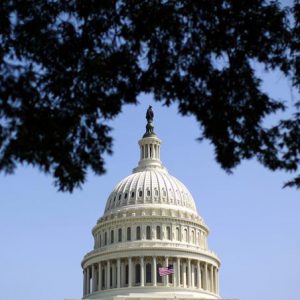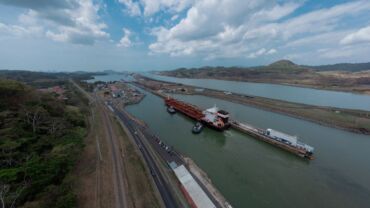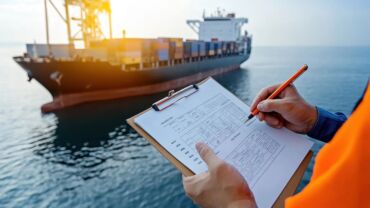The President of the United States has tools at his disposal that allow him to act to protect an industry against international competition. These measures include section 201 and section 232 tariffs.
Section 201 of the Trade Act of 1974 (19 U.S.C. 2251) allows domestic industry to petition the U.S. International Trade Commission (USITC) for import relief, whereas Section 232 of the Trade Expansion Act of 1962 allows the president to impose import tariffs when foreign goods might threaten national security.
On January 22, 2018 President Trump approved recommendations to impose Section 201 safeguard tariffs on imported large residential washing machines and solar cells and modules. On March 8, 2018 President Trump approved recommendations to impose Section 232 safeguard tariffs on foreign steel and aluminum.[1]
These safeguard measures may be especially concerning for the U.S.’s FTA partners as these higher tariffs violate the terms of the international agreements that have been in place for many years. For these affected FTA partners, mechanisms exist that allow them to challenge the application of these higher tariffs: The World Trade Organization (WTO) dispute resolution procedure and specific terminology found under the respective free trade agreements (NAFTA and Korea-US FTA).
The mechanisms found under the FTA agreements may allow for a more immediate challenge and resolution of the dispute as opposed to the lengthy dispute resolution procedure in the WTO. First, Mexico has a mechanism under NAFTA Chapter 20 and section 802.6 and second, Korea also can challenge under Article 10.5 of the Korea-US Free Trade agreement (KORUS).
Mexico can request the organization of a dispute settlement panel under chapter 20 which decides whether the safeguard measure is a violation of the obligations under NAFTA. If it is determined to be a violation, Mexico has the ability to impose retaliatory measures under 802.6. This occurred in the 1990’s and the measures were determined to be a violation under NAFTA.[2] The ITC established that imports were harming or threatening to harm a domestic industry and on November 28, 1996 the president proclaimed a temporary increase in duties over three years. Mexico retaliated with increased duties on U.S. products and requested a Dispute Settlement Panel under NAFTA Chapter 20 to examine whether the ITC’s determination was consistent with NAFTA. A year later the panel concluded the safeguards were a violation of U.S. obligations under NAFTA. 10 months after that, President Clinton terminated the safeguard action.
If Mexico wanted to challenge these new Section 201 tariffs they would do so by submitting a panel review under Chapter 20 of NAFTA.[3]
Similarly, the Korea – U.S. free trade agreement (“KORUS”) allows for safeguard measures in Article 10.5 if a good constitutes “a substantial cause of serious injury, or threat thereof, to a domestic industry producing a like or directly competitive good.” In the most recent Section 201 tariff protections made for the domestic producers of solar panels, the ITC made the determination that Korean imports were a “substantial cause of serious injury”; therefore, under 10.5 KORUS allows the U.S. to take certain action (i.e. apply higher tariffs) for these products.
Conversely, the Section 201 tariff protections applied to importers of residential washers was applied against the recommendations of the ITC to exclude our trading partner Korea. President Trump ignored the ITC findings that Korea was not a “substantial cause of serious injury” which makes the safeguard measures violative of article 10.5 of KORUS.
South Korea’s trade minister has stated that Korea will respond to the protectionist measures however, instead of challenging under the FTA article 10.5 Korea has chosen to challenge the tariffs under the WTO dispute resolution procedures.[4] In a meeting with industry officials he seemed to be confident they have a valid case “It is clear that the latest safeguard measures would violate the WTO rules.” [5]
Historically, the WTO has sided against the U.S. in every challenge to Section 201 tariff provisions. Few provisions from past Section 201 tariff provisions lasted the full four years because the affected countries have successfully challenged the provisions through the WTO dispute resolution procedure. The affected industries include wheat gluten, lamb meat, circular welded leaded pipe, and steel.
It’s not that the WTO doesn’t allow protection of domestic industry; it does. There is a very specific way that WTO members can properly impose these provisions and they are spelled out in Article XIX commonly known as the “escape clause”. According to Douglas A. Irwin from the Economics department at Dartmouth, U.S. law does not require the “causal link” required by the WTO standard causing these policies to meet U.S. standards but fail at the WTO.[6]
In conclusion, both NAFTA and KORUS free trade agreements have been targeted by the Trump administration for re-negotiation. President Trump has expressed his dislike for these dispute resolution provisions and stated his intention to remove them during renegotiation. When signing these safeguards into effect, President Trump discussed the NAFTA and Korus renegotiation goals and assured the press that these safeguards would not start a trade war.[7] It will be interesting to see if our trade partners enforce the sections allowing them to challenge tariff measures and if the challenge measures manage to remain in the agreements following the re-negotiations.
[1] Relief comes to U.S. Washing Machine and Solar Cell Manufacturers, But at What Cost?
[2] In 1995, the corn broom industry requested import relief from foreign importers.
[3] Large Residential Washers from Mexico
[4] DS546: United States – Safeguard Measure on imports of large residential washers
[5] S. Korea says to complain to WTO about U.S. tariffs on washers
[6] Causing problems? The WTO review of causation and injury attribution in US Section 201 cases
[7] Remarks by President Trump at Signing of Section 201 Actions







